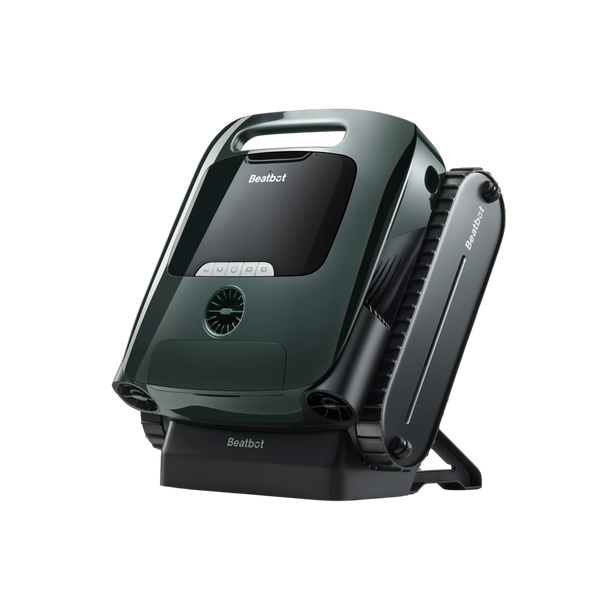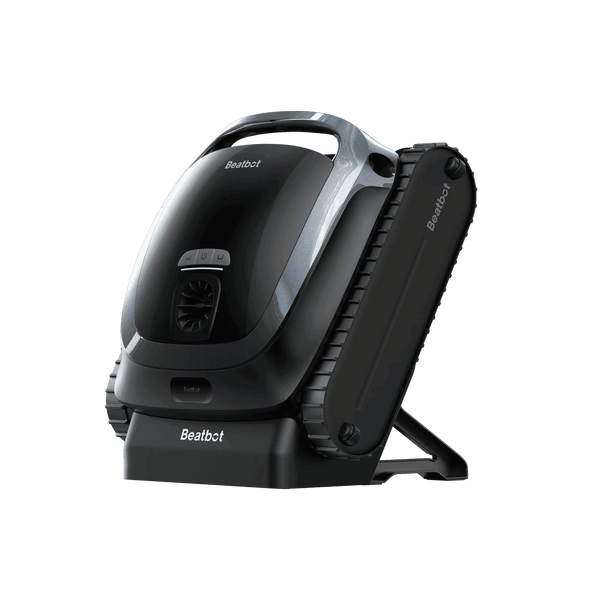Restoring Balance: How to Correct Over-Chlorination in Your Pool
Green, crystal-clear water turns heads, but too much chlorine creates headaches - literally. Let's jump into fixing an over-chlorinated pool without getting lost in complex chemistry.
Table of content

Initial Assessment
That strong "pool smell" hitting your nose? It's not what you think. Contrary to popular belief, heavily chlorinated pools don't actually smell like chlorine. That distinct odor comes from chloramines - compounds formed when chlorine binds with sweat, oils, and other organic matter in your water.Start by testing your water's current chemical levels. Skip the guesswork and grab a reliable testing kit. Digital testers give you precise readings, but good old test strips work fine too. You're looking for free chlorine levels - anything above 5 parts per million (ppm) needs attention.Watch out for these telltale signs: burning eyes, itchy skin, faded swimsuits, and brittle hair. Your pool's surfaces might feel slippery, and metal parts could show early corrosion. These symptoms mean it's time to take action.
Understanding Safe Chlorine Levels
Pool chemistry doesn't need a PhD, but knowing your target numbers saves time and money. Your free chlorine sweet spot? 1-3 PPM for residential pools, preferably 3 PPM! This range kills bacteria without irritating swimmers.Free chlorine actively sanitizes your pool, while combined chlorine (those pesky chloramines we mentioned) just takes up space. Think of free chlorine as your pool's security guard - it needs to stay alert and available. Combined chlorine resembles a sleeping guard - present but not helpful.pH levels make or break chlorine's effectiveness. Keep yours between 7.2 and 7.6. Higher pH locks up your chlorine like a cage, forcing you to use more. Lower pH makes chlorine too aggressive, corroding pool surfaces and equipment.
High Chlorine Issues
An overabundance of chlorine in your pool is typically a result of an excessive amount being introduced into the water. This can occur from using an excessive number of chlorine tablets or after heavily shocking the pool. It might also be due to an over-application of chlorine following the addition of a chlorine stabilizer, which is cyanuric acid or CYA that helps to reduce the rate at which the sun degrades chlorine. Elevated chlorine levels pose risks to swimmers, particularly affecting their respiratory systems, skin, and eyes, and can also cause damage to pool surfaces such as vinyl liners.
Immediate Safety Steps
Restrict Pool Access
Safety first - keep everyone out until levels normalize. Those "sorry, pool's closed" conversations feel awkward, but they beat dealing with irritated skin and red eyes. Put up temporary signs if you manage a public pool. For home pools, a quick family meeting does the trick.
Ventilation Measures
Time to let your pool breathe. Remove automatic covers completely - partial removal creates dangerous chlorine gas pockets under the remaining cover. Run your pump at high speed to circulate water through the entire system.Sunlight naturally breaks down chlorine, so don't be afraid of removing solar covers during daylight hours. Your pool might lose some heat, but chemical balance matters more than temperature right now. Keep the pump running while the cover's off - circulation speeds up the chlorine reduction process.Remember, measuring chemicals gets tricky in direct sunlight, so save your testing for dawn or dusk. This gives you accurate readings without sunlight interference.
Natural Chlorine Reduction Methods
Patience pays off when fixing an over-chlorinated pool. Sunlight breaks down chlorine quickly - about 90% disappears in just 2 hours of direct sun exposure. But don't rely on sunshine alone.Adding fresh water dilutes high chlorine levels fast. Turn on your garden hose and drop it into the deep end. Let it run while the pool drains from the shallow end. Replace about 25% of your pool water for noticeable results. Sure, your water bill might spike, but your swimmers will thank you.Natural dissipation takes time. Expect 2-4 hours for each part per million of chlorine to break down naturally. Hot days speed this up, while cloudy weather slows things down. Keep testing every few hours - you'll spot the trend.
Chemical Solutions
Neutralizing Agents
Chemical neutralizers pack a punch against high chlorine. Sodium thiosulfate drops chlorine levels within minutes. But careful - this stuff works fast. Add it slowly in small doses. Wait 30 minutes between treatments. Too much too fast throws your water chemistry into chaos.Skip the pool store and grab some hydrogen peroxide. The same stuff in your first aid kit neutralizes chlorine naturally. Pour it near your return jets for even distribution. One gallon per 10,000 gallons of pool water does the trick.Dose these chemicals when the sun sets. Sunlight makes them less effective and wastes your money. Plus, evening application gives them time to work overnight while nobody's swimming.
Testing and Monitoring
Tracking progress means regular testing. Grab those test strips every hour until levels drop below 5 ppm. After that, test every 4 hours. Write down your readings - patterns emerge that help prevent future problems.Watch your pH and alkalinity too. They bounce around while chlorine levels drop. High chlorine often drives pH up, so expect some acid demand once things settle. Total alkalinity might need a boost to keep your pH stable.Keep your filter running 24/7 during this process. Clean water speeds up chemical reactions and prevents dead spots where high chlorine pockets hide. Backwash if pressure rises - trapped debris slows down circulation when you need it most.Your test kit might show weird colors with super high chlorine. Dilute your test sample with distilled water before testing. Mix equal parts pool water and distilled water, then double your reading for true results.
Prevention Strategies
Pool chemistry swings happen. But smart dosing prevents chlorine spikes. Start with your pool volume - most owners overestimate by 20%. Measure length, width, and average depth. Multiply these numbers together. For oval pools, multiply by 0.7 for true volume.Weather changes your chlorine needs dramatically. Sunny days burn through chlorine fast. Rainy days dilute it. Thunder storms add nitrogen, creating more chloramines. Check your weather app before adding chemicals.Stabilizer levels matter more than most realize. Think of stabilizer as sunscreen for your chlorine. Low levels waste chlorine, while high levels lock it up. Keep yours between 30-80 ppm for best results.
Water Balance Recovery
Getting chlorine right solves half the puzzle. Now tackle those other critical numbers. Stabilizer might need adjusting after diluting your pool. Add cyanuric acid slowly - it dissolves like tiny rocks and takes days to show up in tests.pH bounces back weird after chlorine shocks. Give it time. Test daily but wait for chlorine to normalize before chasing perfect pH. When you do adjust, use small acid doses. Big pH swings stress pipes and surfaces.Alkalinity acts like your pool's shock absorber. If it drops below 80 ppm, pH swings wild. Above 120 ppm makes pH stubborn. Add sodium bicarbonate if needed, but remember - it drives pH up too.

Maintenance Tips for Long-term Balance
Regular Testing Schedule
Daily tests catch problems early. Check chlorine and pH before swimmers jump in. Full chemistry tests weekly keeps you ahead of trends. Summer needs more attention than winter.Create a simple log book. Note chemical readings, what you add, and when. Pool apps make this easier, but paper works fine. Patterns jump out after a few weeks - like high chlorine demand every Monday after weekend parties.
Equipment Checks
Your filter removes dead chlorine byproducts. Clean it when pressure rises 8-10 PSI above normal. Clogged filters make chemicals work harder than necessary.Check your chlorinator settings monthly. Tablets dissolve faster in hot weather. Automatic feeders drift out of calibration. Salt cells need cleaning when calcium builds up.Trust your pump's pressure gauge. Low pressure means poor circulation. Poor circulation creates dead spots where chlorine concentrates. Clean pump baskets weekly - leaves and debris slow water flow.Remember, consistent maintenance beats crisis management every time. Your pool stays safer, costs less to run, and gives you more swim time with fewer headaches.
Relative Blogs
About the author



















